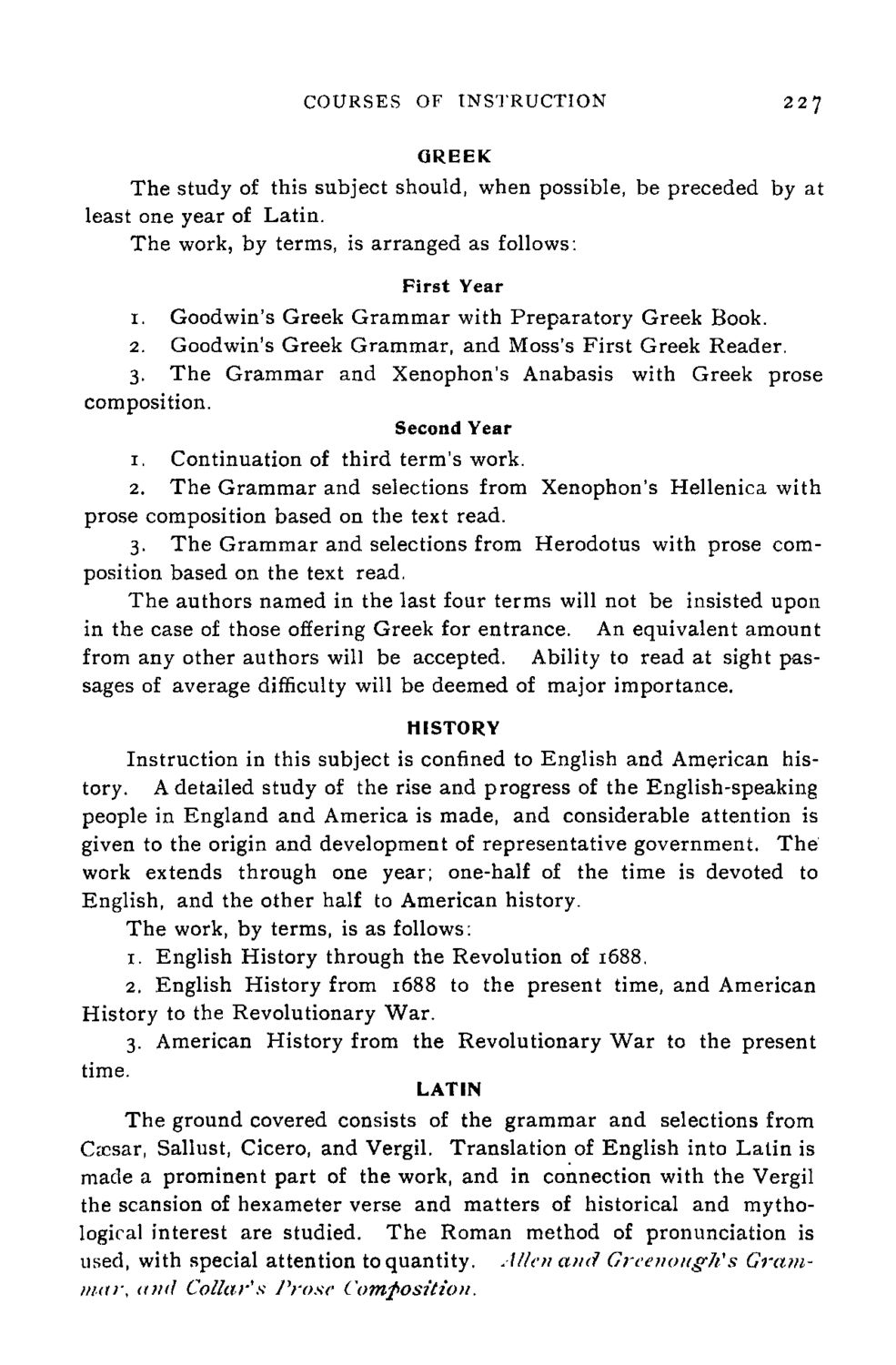| |
| |
Caption: Course Catalog - 1896-1897
This is a reduced-resolution page image for fast online browsing.

EXTRACTED TEXT FROM PAGE:
COURSES OF INSTRUCTION GREEK 227 The study of this subject should, when possible, be preceded by at least one year of Latin. The work, by terms, is arranged as follows: First Year 1. Goodwin's Greek Grammar with Preparatory Greek Book. 2. Goodwin's Greek Grammar, and Moss's First Greek Reader. 3. The Grammar and Xenophon's Anabasis with Greek prose composition. Second Year 1. Continuation of third term's work. 2. The Grammar and selections from Xenophon's Hellenica with prose composition based on the text read. 3. The Grammar and selections from Herodotus with prose composition based on the text read. The authors named in the last four terms will not be insisted upon in the case of those offering Greek for entrance. An equivalent amount from any other authors will be accepted. Ability to read at sight passages of average difficulty will be deemed of major importance. HISTORY Instruction in this subject is confined to English and American history. A detailed study of the rise and progress of the English-speaking people in England and America is made, and considerable attention is given to the origin and development of representative government. The work extends through one year; one-half of the time is devoted to English, and the other half to American history. The work, by terms, is as follows: 1. English History through the Revolution of 1688. 2. English History from 1688 to the present time, and American History to the Revolutionary War. 3. American History from the Revolutionary War to the present time. LATIN The ground covered consists of the grammar and selections from Cxsar, Sallust, Cicero, and Vergil. Translation of English into Latin is made a prominent part of the work, and in connection with the Vergil the scansion of hexameter verse and matters of historical and mythological interest are studied. The Roman method of pronunciation is used, with special attention to quantity. Allen and CreenougK s Grammar, and Collar's Prose Composition.
| |